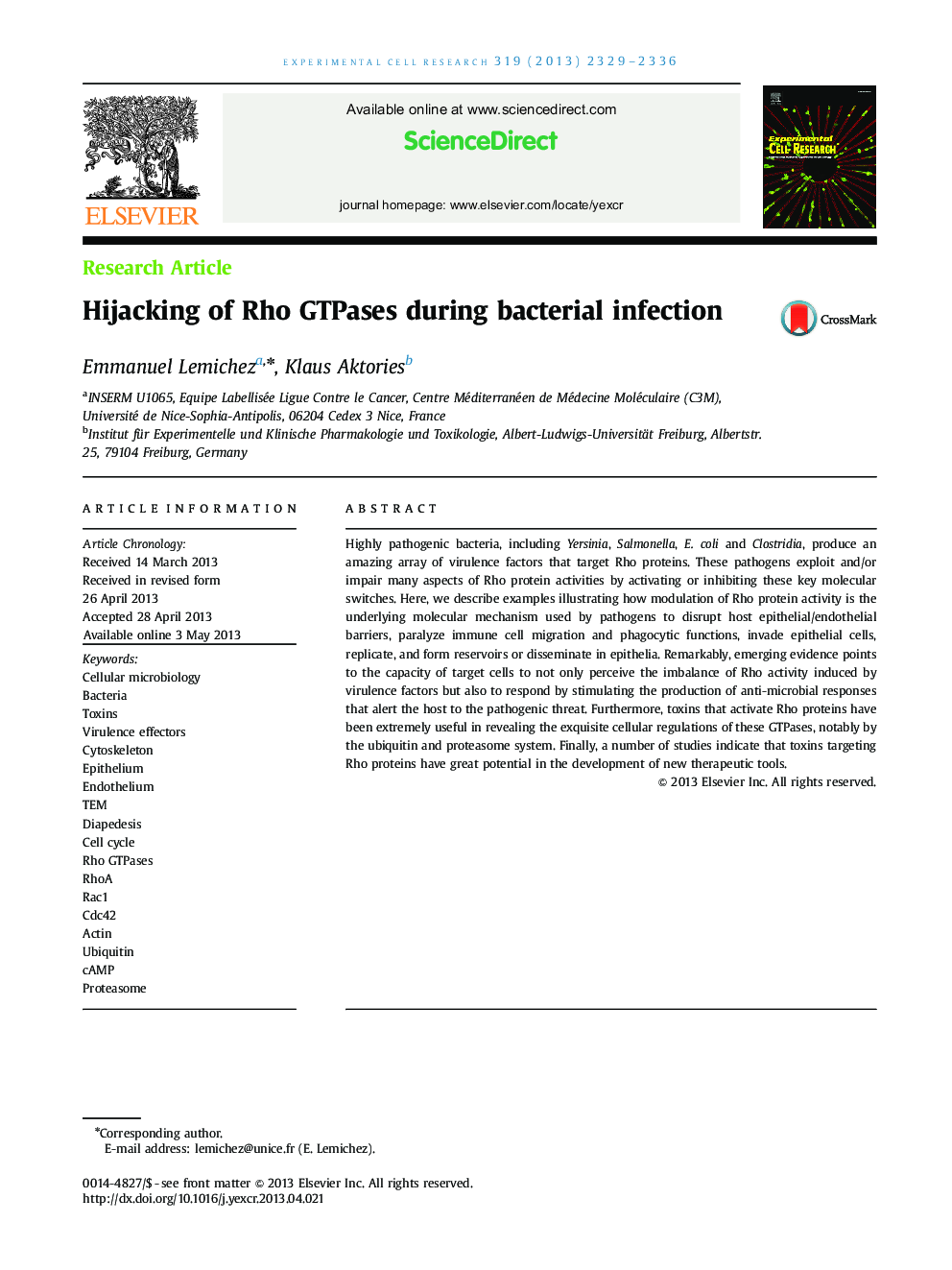| Article ID | Journal | Published Year | Pages | File Type |
|---|---|---|---|---|
| 2130405 | Experimental Cell Research | 2013 | 8 Pages |
Abstract
Highly pathogenic bacteria, including Yersinia, Salmonella, E. coli and Clostridia, produce an amazing array of virulence factors that target Rho proteins. These pathogens exploit and/or impair many aspects of Rho protein activities by activating or inhibiting these key molecular switches. Here, we describe examples illustrating how modulation of Rho protein activity is the underlying molecular mechanism used by pathogens to disrupt host epithelial/endothelial barriers, paralyze immune cell migration and phagocytic functions, invade epithelial cells, replicate, and form reservoirs or disseminate in epithelia. Remarkably, emerging evidence points to the capacity of target cells to not only perceive the imbalance of Rho activity induced by virulence factors but also to respond by stimulating the production of anti-microbial responses that alert the host to the pathogenic threat. Furthermore, toxins that activate Rho proteins have been extremely useful in revealing the exquisite cellular regulations of these GTPases, notably by the ubiquitin and proteasome system. Finally, a number of studies indicate that toxins targeting Rho proteins have great potential in the development of new therapeutic tools.
Keywords
Related Topics
Life Sciences
Biochemistry, Genetics and Molecular Biology
Cancer Research
Authors
Emmanuel Lemichez, Klaus Aktories,
